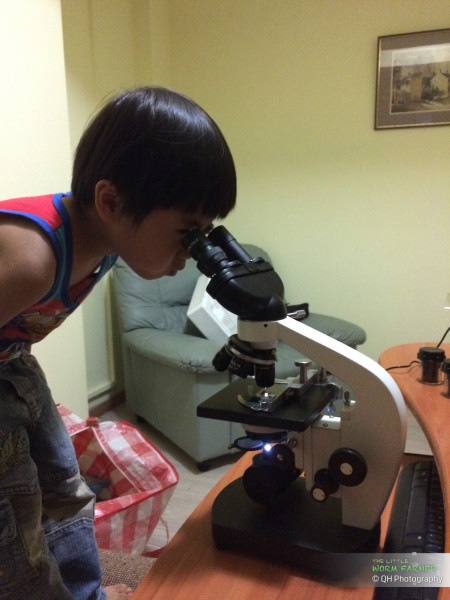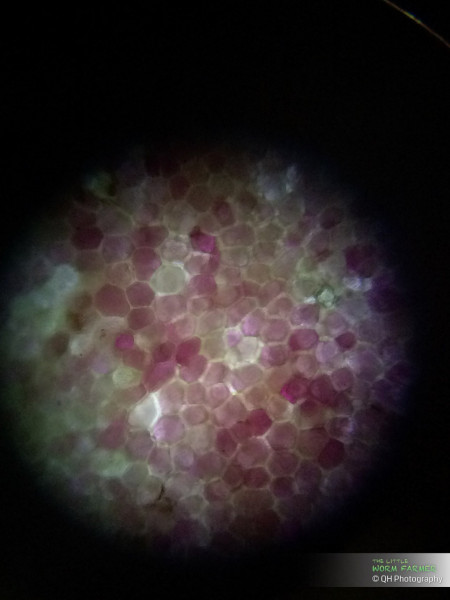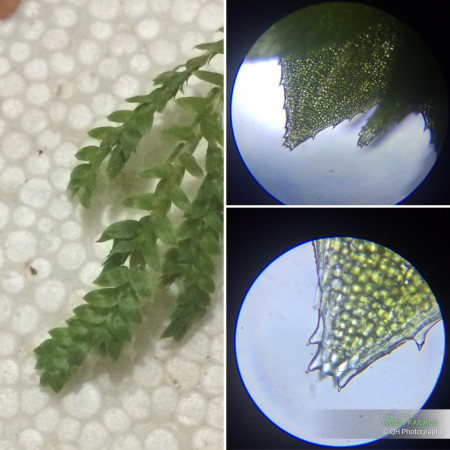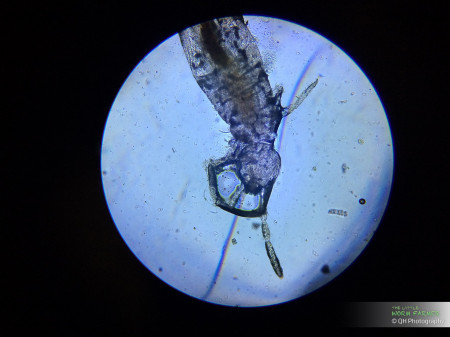Microscopy in worm farming
-
Compost tea quality control - part 3: AACT microbiology assay day 2
Posted in A day in a worm farm, Microscopy in worm farming on Dec 07, 2016
Yesterday was a very long day for me. The travel home from work took me an extra 15 minutes on top of my usual 1h50 and had to go shopping first. So I got home at around 7:40pm and had dinner before stopping the compost tea brewer and take a sample for checking it under the microscope.
Keeping in mind that I still need to apply the tea to my garden, I tried not to take too much time looking at microbes.
Nothing spectacular, I just noticed more visible mobile microorganisms even at 80x where I usually see nothing. There was a large amount of both flagellate and ciliate Protozoa and lots of bac...
-
Compost tea quality control - part 2: AACT Microbiology Assay day 1
Posted in A day in a worm farm, Microscopy in worm farming on Dec 06, 2016
AACT microbiology assay #1 I realise my agenda is pretty busy for me to do proper assay of my AACT and record and update the blog while learning how to do the assay properly. So just to keep this going I will be making short updates until I'm getting comfortable with the process.
Initial assay
Today at around 6.15am I started a new batch of compost tea. For food, I was using kelp and alfalfa meal in the hope of getting a fungal rich tea. I took two samples, one of the rainwater itself and another one after adding the vermicompost and waiting for about a minute. Being a bit late for work, I did...
-
Compost tea quality control - part 1: microscope test
Posted in A day in a worm farm, Microscopy in worm farming on Nov 29, 2016
After receiving my microscope all the way from India, I mounted it in one of our spare rooms on my formely computer desk. It was quite easy and fast to assemble. Few memory refresh was needed to recognise all the parts and what they were for but it was all good.
I decided to involve Thien-San, my 5 year old boy, by having him check at leaves and then compost tea micro-organisms. Underneath are photos of my boy, a sick leave, a club moss and a springtail:




As I went along I wanted to record more photos and videos but the microscope camera that came with the product did not work on my Mac so ...
-
Compost tea quality control - Introduction
Posted in A day in a worm farm, Microscopy in worm farming on Nov 29, 2016
Sooner or later an avid worm farmer and gardener will be interested in making a liquid fertiliser off the vermicompost created by the worms. Most beginners will be using the worm tea/wee which is actually the leachate from the worm bin. The leachate contains good stuffs but also potentially bad stuffs due to the presence of non composted material and the possibility of anaerobic condition especially when the liquid has been sitting for days in the collection tray. Anaerobic condition is to be avoided in a garden which is why we try to aerate the soil with worms and stir away from compacted soi...